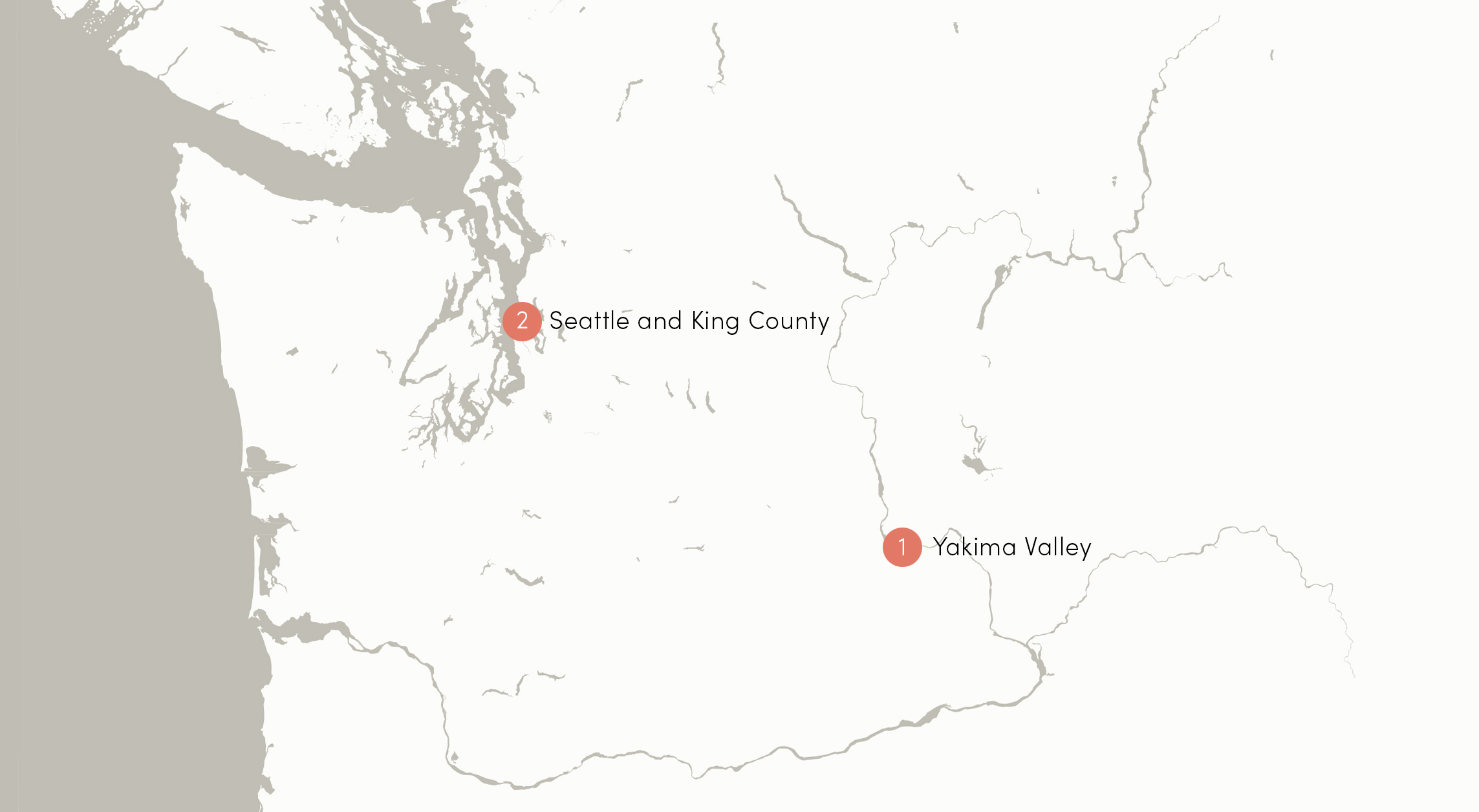Latino Heritage
The history of Spanish-speaking peoples in the Pacific Northwest reaches back to the 18th century. Spain (and present-day Mexico) sent sailing expeditions to map the coast and claim the territory before Britain or Russia could do so. Those Spanish explorers were the first non-Native people to visit the Washington coast. Although their land claims did not withstand, some of their place names are still in use today. The San Juan Islands, for example, have numerous Spanish names (Orcas, Rosario, Lopez, Patos, Sucia, etc.) thanks to those early explorers.
In more recent times, Latinos (Spanish-speaking people) have continued to influence and shape the culture and identity of our state. In the early 20th century, Latinos represented a small portion of the state’s permanent population but migrant agricultural workers from the Southwest passed through the state on annual harvest cycles. Some of those workers and their families began to settle in the Yakima Valley in the 1930s. The next decade brought the second World War and a booming demand for workers in wartime industries as well as a high demand for farm products. Public housing projects like Yesler Terrace and Holly Park in Seattle and labor camps, both public and private, in eastern Washington became home for most of the new arrivals. In particular, the urgent need for farm labor prompted an international agreement which brought temporary laborers, known as braceros, from Mexico. Permanent settlement began to happen in communities like Sunnyside, Wapato and Granger in the Yakima Valley, where critical mass allowed for shared preservation of culture. People bought houses and started businesses, becoming part of the larger community instead of seasonal visitors.
After the wartime industrial jobs disappeared, many Latinos returned to the Yakima Valley or took up farm work in other areas, such as Moses Lake and the Skagit Valley. Those areas followed the Yakima Valley and became centers for Latino populations. The Skagit and Yakima valleys are both renowned for their agricultural productivity, thanks in many ways to the Latino families who have worked in the fields, orchards and processing plants there for many decades.
The urban Latino presence, particularly in King and Pierce counties, initially came from the migration of wartime workers from the Yakima Valley and elsewhere. The children of the families who had migrated to Yakima during the Great Depression and World War II era grew up in during extremely difficult times, both economically and socially. In the 1960s and ‘70s, as they came of age, they started to migrate from eastern Washington farming towns in order to take advantage of work and educational opportunities on the western side of the state. They enrolled at the University of Washington and Western Washington University (Bellingham), formed student groups honoring Mexicano/Chicano heritage, and many got involved with the social movements of the time. Some of the urban recruits pursued jobs with Boeing or started their own business entirely.
In the last 30 years, the Latino story has continued to evolve in Washington. Immigrants from Central and South America have expanded and diversified the Latino presence. Today, there’s a wide variety of Latino owned businesses in and around not only Seattle and the Yakima Valley but across the state. Cultural events and museums, such as the soon-to-open Sea Mar Museum of Chicano/Latino Heritage, highlight the many contributions of and diversity within the Spanish speaking population of Washington.
